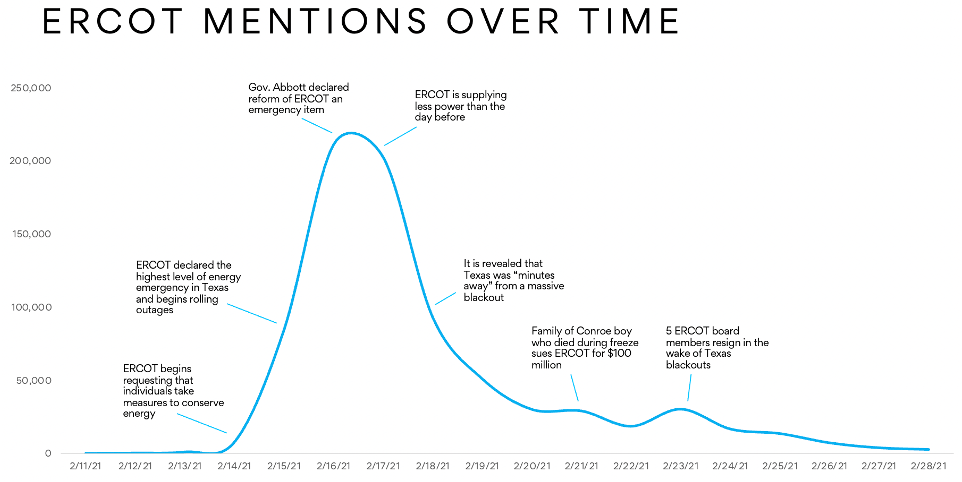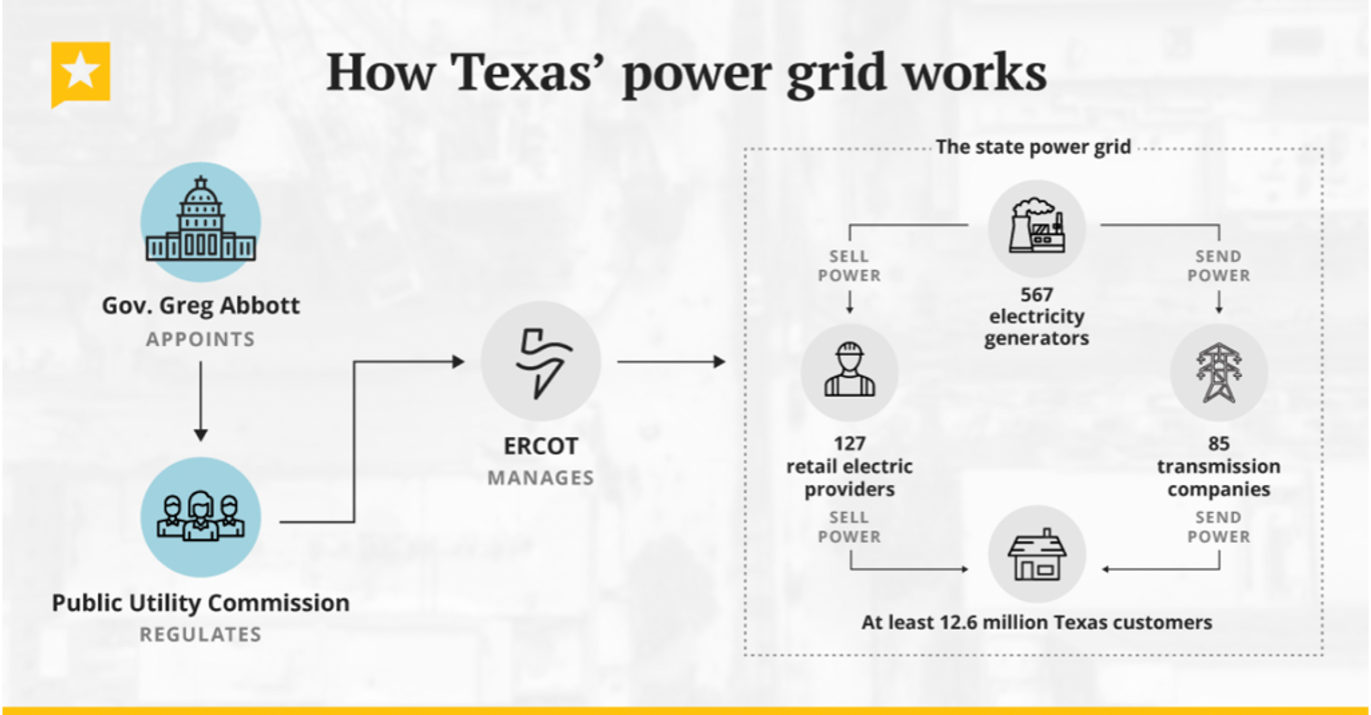The massive power outage that gripped Texas in February continues to make national news and is fueling calls to regulate the only fully deregulated grid in America. The fallout from this crisis is far from over, but some fundamental lessons are clear. In an operational upset, especially a catastrophic upset, failure to communicate effectively compounds the operational impact and the reputational damage. It offends the injured and triggers emotions that impede acceptance of rational explanations from management afterwards. Whether silence, mixed messages or both, poor communications are often what upsets politicians and the public most.
While experts will cite failure to force power providers to winterize years earlier and dissect any error in decisions and actions taken by ERCOT management and operators facing a ‘perfect storm’ of complicating factors in the heat of the moment, the overwhelming evidence suggests that the ERCOT team pulled off a monumental feat of technical ingenuity that narrowly averted total collapse of the Texas grid – a worst-case scenario that would have multiplied the human and economic misery the service region experienced by orders of magnitude.
In the case of ERCOT, it cost the CEO, Board Chair, Vice-Chair, and other board members their jobs. Even the name, Electric Reliability Council of Texas, has become the butt of jokes. A breathtaking fall from grace from a proud and highly innovative transmission organization. So how did it happen?
In part, communications. Specifically, a communications disaster that undermined confidence in everything else ERCOT did. Read on and we’ll take a look at both the unfolding events and some communications lessons drawn from Legend Labs’ review of the mainstream and social media conversation. They point to some simple steps Regional Transmission Operators, regulators, public utilities, and competitive power providers can take to avoid a similar fate.
* * *
Tuesday, Feb. 9 – ERCOT officials acknowledge in a board meeting that “pretty frigid temperatures” were headed to Texas – but the conversation about the storm only lasted 40 seconds.
Friday, Feb. 12 – Texas Gov. Greg Abbott issued a disaster declaration in all 254 counties.
Sunday, Feb. 14 – ERCOT urged consumers and businesses to limit their electricity as much as possible in a news release followed by a tweet. ERCOT officials also warned that it could impose rolling outages during the next two days. ERCOT then rolled out several tone-deaf tweets about ways to conserve energy:
- ERCOT then revealed that it set a new winter peak demand record Sunday evening – reaching more than 69,000 megawatts in a one-hour timeframe.
Monday, Feb. 15 – People in San Antonio and the surrounding area woke up to 3-6 inches of snowfall, the most snow the area had seen since 1985. Many schools, universities, and businesses across the state closed.
- ERCOT tweeted around 12:17 AM that it did not intend to begin rolling blackouts. Just after 1:00 AM, another tweet from ERCOT announced that it would begin rotating outages. Another tweet at 1:25 AM declared that rotating outages were underway. At the peak, over 5 million people in Texas were without power, some for more a better part of a week.
- Later that afternoon, ERCOT reported that it restored power to 500,00 households, linking to a press release.
- ERCOT CEO Bill Magness joined CBS News over Zoom to speak about the outages and what the council is doing to help those without power.
- Conversation began to spike on Monday, Feb. 15 after ERCOT announced that it would begin rolling outages in the middle of the night. ERCOT received about 200k mentions a day for the next two days as unexpected outages continued. (See graph of ERCOT mentions below.)
Tuesday, Feb. 16 – Gov. Abbott declared the reform of ERCOT an emergency item in this legislative session, saying that ERCOT has been “anything but reliable.”
- ERCOT tweeted a quote from Senior Director of System Operations Dan Woodfin, who said he was optimistic that ERCOT will be able to reduce the number of outages throughout the day.
- ERCOT also notified residents that there was a scam circulating online asking customers to text their account numbers in order to get power back on. ERCOT went on to say it was working as fast as it can.
Wednesday, Feb. 17 – 2.8 million Texas went without electricity as restoration efforts were hampered by another round of freezing rain and snow in parts of the state.
- ERCOT sent the following tweet to explain what progress had been made:
Thursday, Feb. 18 – Gov. Abbott requested a Major Disaster Declaration for individuals and public assistance for all 254 counties affected by the storm.
- ERCOT announced through a press release that the majority of customers were able to have their power restored as individual electric companies worked in the field to help affected areas.
Friday, Feb. 19 – ERCOT tweeted that operations had returned to normal and that they were no longer asking for energy conservation. ERCOT then went on to thank residents for “helping the grid during this very difficult time.”
- After this tweet, ERCOT did not have any communications until an urgent ERCOT Board of Directors meeting announcement on Feb. 24 to share a presentation on the extreme cold weather event.
Thursday, Feb. 25 – During a joint hearing of the Texas House and Senate investigating the devastating power outages, Texas state Rep. Sam Harless called ERCOT’s communications “pathetic,” adding that “across-the-board” communication from both state officials and energy providers inadequate. “We have to answer to our people, and they deserve to know what’s going on. And they didn’t.”
* * *
SOME KEY TAKEAWAYS FOR REPUTATION PRESERVATION IN A CRISIS
1. HAVE A HEART… AND SHOW IT IN TERMS PEOPLE CAN UNDERSTAND
What frustrated Texans the most during the storm was the tone and often confusing language used by ERCOT in their communications. Written material was overly scientific and matter-of-fact in nature while lacking the sufficient empathy for those affected by the outages. For example, ERCOT’s head of system operations called the polar vortex “well beyond the design parameters of an extreme Texas winter.” As the New York Times reported: “I don’t know what this means either,” Dallas Mayor Eric Johnson said on Twitter in response to a statement by ERCOT using jargon like “load shed” — a term referring to the deliberate shutdown of part of a power system to avoid a broader failure — to explain the outages. “People are suffering, and they need some idea of what to expect.”
These failures were only exacerbated by coverage of blackout victims. The $100 million lawsuit filed by the family of an 11-year-old boy who died during the winter storm was a primary driver of national coverage (The New York Post, and NBC News). All told, 111 people died during the storm. More lawsuits and negative headlines are inevitable.
2. FOCUS ON LOCAL MEDIA FIRST
When it comes to events involving grid operators, public utilities and unregulated power providers, local media outlets know the territory and can break in-depth stories before national media. One goal should be to find a journalist and outlet to write the reference piece that will be used as more regional and national media join the coverage. For example, a February 15 Houston Chronicle article detailing ongoing winter storm events led all online news coverage with 75,400 social media engagements. Overall, local stories got more engagements than many national outlet stories, presenting an opportunity for utility companies to reach their impacted customers and sidestep some of the political dynamics and finger-pointing that tend to dominate national coverage of local events.
3. ESTABLISH CLEAR LINES OF COMMUNICATIONS WITH STRATEGIC PARTNERS
Public criticism of ERCOT’s failures quickly became a bipartisan issue both during and in the immediate aftermath of the crisis. This was largely due to a lack of dialogue between executives and political leaders. Bringing key influencers like politicians and journalists into the tent early can prove wise in the early stages of a crisis, so they can act as distributors of information to the public.
Moreover, it is critical to drive message consistency among allies. For example, the Texas Railroad Commission is in charge of regulating natural gas, transmission of which was largely incapacitated and further exacerbated grid outages, but Commission Chair Christi Craddick testified before a joint hearing of the Texas House and Senate that she had not communicated directly with ERCOT during the storm.
State Rep. Donna Howard, later expressed frustration: “Why are people not talking to each other? Why do we have this set up to where the PUC and ERCOT and the Railroad Commission and the Legislature and whoever else needs to be involved here, why are we not talking to each other?” she said. “I am dumbfounded by it. And I don’t want tonight to be the last thing we say about this.”
There also was a lack of uniformity when it came to messaging around rotating outages and updates among the affected power providers. ERCOT’s CEO admitted to communications problems in failing to warn transmission owners soon enough that they would have to shed loads for a long period of time. Magness said, “I know it confused people and frustrated people and I acknowledge that.”
4. PRODUCE CREATIVE, VISUAL CONTENT
In a crisis, the most compelling and creative content will always win over attention of the public – press releases and statements simply do not hold muster. In the case of ERCOT, the most engaged pieces of media related to the crisis typically featured visual content (video or infographics) and came from media outlets (The Texas Tribune). While it is still important to have a press release and interviews with your spokesperson, it’s equally important to disseminate the small bites of information you want the public to take home through visual communications and alternative channels (Twitter, YouTube, etc.). If you don’t fill the information vacuum with worthwhile and engaging content, others will fill it instead – and you may not like what they have to say.
5. SHARE CONDENSED VERSIONS OF COMMUNICATIONS THROUGH SOCIAL MEDIA
Disseminate the small bites of information you want the public to take home through social channels after press releases or interviews with your spokesperson. Citizen journalists will decide what one- or two-line quotes are most important if you do not. Continue to share your key messages through all channels to ensure that your high-level points are emphasized effectively.
During the crisis, mentions around ERCOT CEO Bill Magness as a spokesperson were neutral to negative. Many of the most-engaged mentions of Magness were verbatim quotes from public statements. This perhaps points to ERCOT not sharing its own content well enough, and citizen journalists instead have to disseminate important information themselves. This also allowed these individuals to input their own opinion while sharing ERCOT’s messages (example 1, example 2, example 3).
6. FIND YOUR HEROES – AND AVOID BEING IDENTIFIED AS THE VILLAIN
In every crisis situation, there is a villain, a victim, a hero and a moral. Along with Mother Nature, ERCOT quickly found itself in the role of villain during the energy crisis. But as noted above, in there is an alternating current to the ERCOT’S role in this narrative — heroes emerged from within the grid operator on that fateful night when the power was turned off. Operators within the control room had to make agonizing decisions to preserve the State’s power grid for the long term. There were other heroes that week. Power line workers who braved the ice and snow to repair grids. And volunteers who delivered blankets and water to those in need. Those are the heroes that communications experts at ERCOT could have highlighted and praised during the crisis.
ERCOT Vice Chair Peter Cramton, who ultimately resigned, used a pilot-and-plane analogy to frame the men and women in the ERCOT control room as heroes, but the die had already been cast for ERCOT as the ultimate villain of this saga. And yet, leaders in the organization have a chance to earn some credibility back by properly honoring and praising the individual heroes of this crisis in the coming weeks and months.
7. SHOW WHAT YOU ARE DOING TO MAKE SURE THIS TRAGEDY NEVER HAPPENS AGAIN
For ERCOT, addressing the need for weatherproofing measures to harden the grid and better communications systems to keep the public informed is complex. But one thing is certain: ERCOT will be well served to make sure all its constituencies are in the loop on just what is being done.
Several Texas House representatives have called for private companies to create better crisis communication plans for both customers and lawmakers.
Just as preventative measures like winterization and disjointed regulations might have mitigated the operational crisis that occurred, a more robust crisis communications plan and agile approach to engagement may have limited the reputational blowback that followed. This incident serves as a reminder for organizations to regularly review, update, and pressure-test their crisis plans to ensure they can successfully navigate a volatile and complex crisis. For ERCOT, the above principles remain relevant as crisis management doesn’t end when the storm does.






